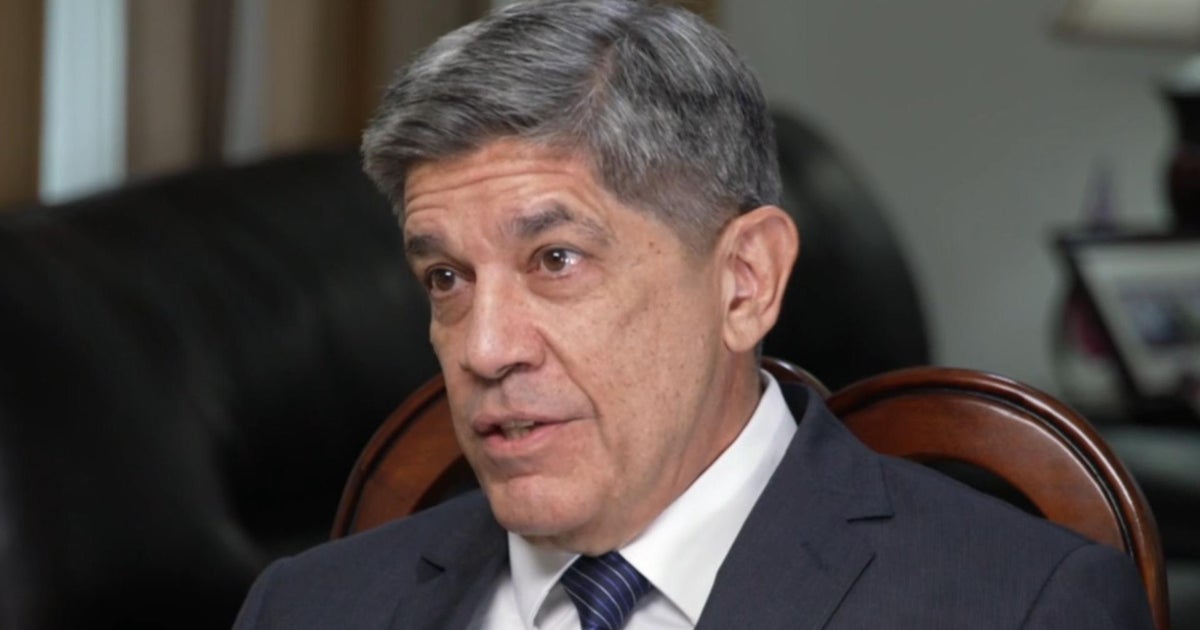Rare earth elements: Not so rare after all
This blog post by 60 Minutes' Kevin Livelli, one of the producers who reported on rare earth elements this week, was originally published on March 22, 2015:
Not long ago, if you had stopped me on the street and told me there was an interesting 60 Minutes story to be told about the lanthanide series of rare earth elements, I would have said you're crazy.
To begin with, who's ever heard of them? And even if you did manage to find them on that obscure bottom rung of the Periodic Table, you'd hit another hurdle -- how to pronounce them. They have names only Dr. Seuss might have dreamt up. There's terbium, dysprosium, ytterbium, and lutetium. Neodymium, europium, cerium, and lanthanum. Not exactly the kind of thing that rolls off the tongue.
"...perhaps a little dose of pop culture might spark the imagination. After all, China's hold on rare earth elements is a running theme in 'House of Cards'..."
In this case, I stumbled on rare earths by accident. While doing some other reporting, I found that they were on the mind of former Director of National Intelligence James Clapper. In 2013, he mentioned them in congressional testimony, as part of an annual "Worldwide Threat Assessment" -- a litany of threats to national security.
Clapper told Congress that rare earths are "essential" to the 21st century global economy, including the burgeoning green tech industry, and he emphasized that they are "critical" to advanced defense systems. That was intriguing, I thought. But there was more. One country -- China -- has been holding a "commanding monopoly" over world supply, at the time about 95 percent of the market, and things weren't going to change soon.
The light bulb went off. Here was something that touched people's lives not just in their everyday use (televisions, smartphones, tablets, computers, stereos, cars), but also had implications for U.S. energy security (hybrids, wind turbines, energy efficient lighting) and national security as well (precision-guided missiles, radar, night-vision goggles, lasers, satellites, fighter jets, submarines).
A little more digging revealed that the U.S. had actually once led the world in the rare earth industry and pioneered many of its common applications before ceding that dominance to China. I wanted to know how that happened and what it all meant. Here were good questions for our 60 Minutes story. My colleague, Graham Messick, and I set out to find the answers.
In doing so, we quickly found reporting on rare earths to be especially challenging. To begin with, we had to learn how rare earths are different from other metals and minerals -- like iron or copper. What makes them rare? Turns out, as Lesley Stahl explains in our story, the name is a bit of a misnomer. Rare earths occur naturally in lots of places, but only a few have concentrations high enough to mine. You might think, then, that if the U.S. had more rare earth mines, the problem would be solved. You'd be wrong.
Even if you were to luck out and find a mine like the one owned by Molycorp out in Mountain Pass, California and get it up and running, your work isn't finished. Unlike other metals, rare earths don't go to market in raw form. They have to be separated from one another and many are turned into metals first, which means they must be processed to exact specifications (sometimes up to several "9s" as in 99.9999 percent purity) that take into consideration their intended end use. And that is very hard to do. So to be successful in the rare earth business, you need to have not just access to the right rocks, but also access to the right know-how that will allow you to turn those rocks into something useful. That complex combination is what makes them "rare."
Another challenge in reporting on rare earths is understanding the supply chain. Rare earths feed the high tech industry around the world, and supply chains from mine to manufacturer can include as many as 12 stops along the way. So, for example, if you were to follow the dozen or so different rare earths metals that experts say are in each iPhone all the way back to the mine, you'd have an extremely hard time doing so. Same goes for the rare earths used in the F-35. The lengthy supply chains get very complicated very quickly.
What's more, lasting success in the rare earth industry, I learned, only comes when the supply chain companies choose to operate close to the source of rare earths and cultivate a symbiotic relationship. Today, China is on top not only because it has the biggest mine and the most know-how, but also as a result of having drawn manufacturers from around the world that use rare earths (i.e. supply chain customers) to Asia.
To help us understand how rare earths impact our lives and to show us where they can actually be found inside our gadgets, we interviewed Ed Richardson, the president of the U.S. Magnetic Materials Association, a trade group that represents American rare earth magnet makers.
In the video player above, you'll see that Richardson came to the interview with what looked at first to be a bunch of electronic junk. It turns out it really was his old stuff - an old cell phone, ear buds, and a toy helicopter -- but then we watched him dissect each object to reveal the rare earth magnets inside.
Along the way, he taught us a few other cool facts about rare earths. For instance, they can hold a thousand times their own weight, and they are a key technology behind the miniaturization of modern gadgets, enabling them to be smaller and lighter.
If, after watching our 60 Minutes story, you still think rare earths bring up too many bad high school chemistry memories, perhaps a little dose of pop culture might spark the imagination.
After all, China's hold on rare earth elements was a running theme in "House of Cards" (think of Raymond Tusk's push for "Samarium 149"). And Jason Bourne's mission in The Bourne Dominion is defending the only U.S. rare earth mine. There's even a way, if you like to take matters into your own hands, to fight for global control of the rare earth supply in the video game "Call of Duty: Black Ops II."
I guess the Periodic Table isn't so boring after all.





